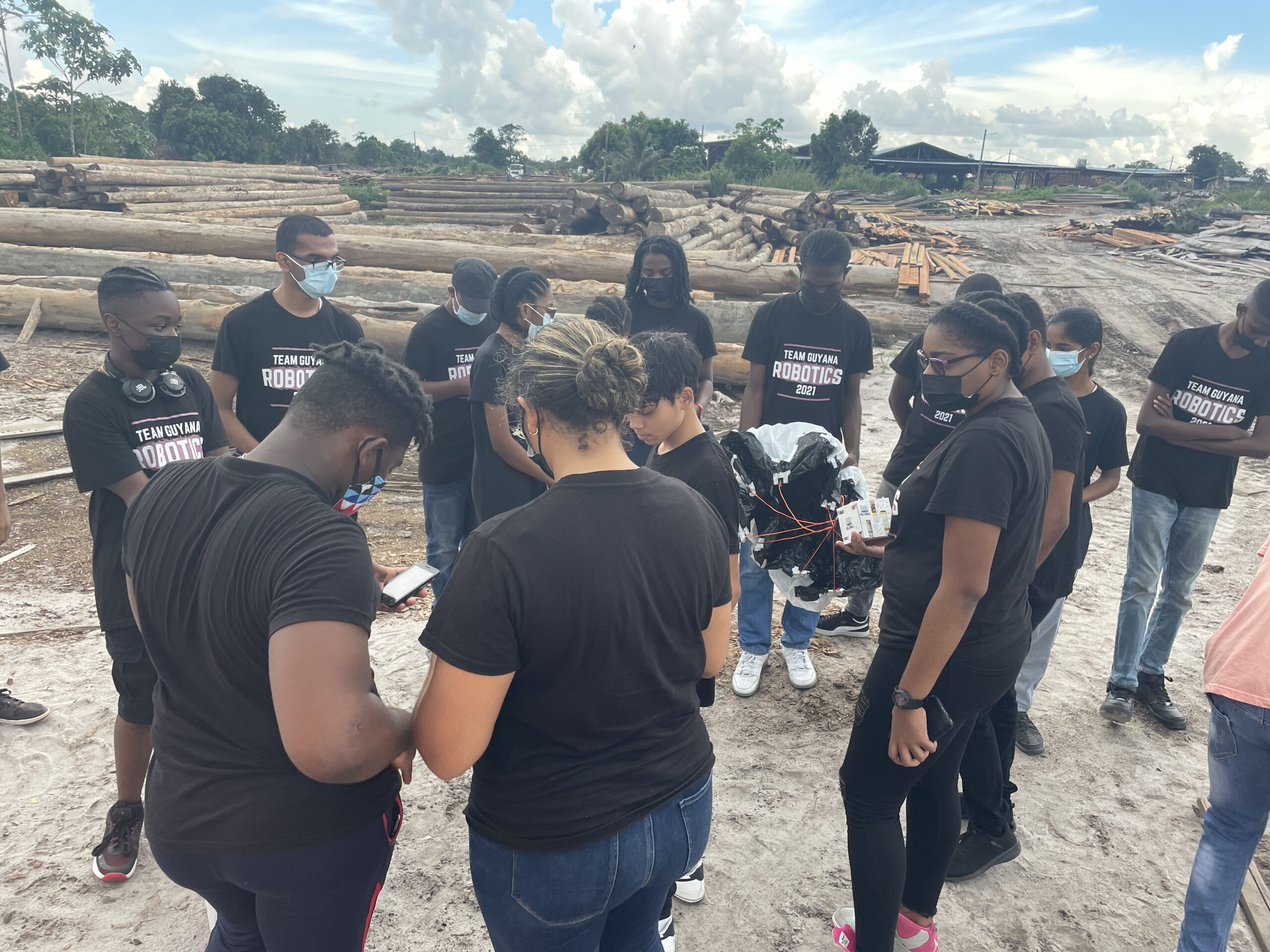“It was the most amazing experience in which I’ve ever had the pleasure of participating”, stated Team Guyana 2021 Coach Arrianna Mahase.
For the past 5 years, Guyana has entered a team of young people into the First Global robotics challenge where as many as 90 to 180 countries participate each year. Our Guyanese youth have travelled to the United States, Mexico and Dubai to meet other young innovators from around the world, but more recently the pandemic has forced the global challenge to the local environs.
Notwithstanding the inability to travel, the challenge remains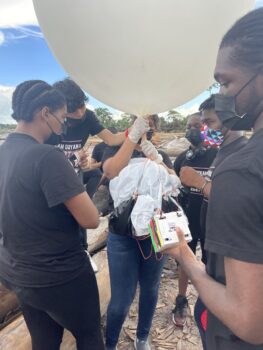 exciting and highly competitive. This year, among others, the young innovators were challenged to build, code, launch, recover and analyze data from their own nano-satellite. Each team received the same standard kit of parts and they all had less then seven weeks to launch their prototypes using high altitude balloons or drones to accomplish a self-identified mission. Team Guyana’s mission was to measure temperature, humidity and general atmospheric conditions in the lower atmosphere.
exciting and highly competitive. This year, among others, the young innovators were challenged to build, code, launch, recover and analyze data from their own nano-satellite. Each team received the same standard kit of parts and they all had less then seven weeks to launch their prototypes using high altitude balloons or drones to accomplish a self-identified mission. Team Guyana’s mission was to measure temperature, humidity and general atmospheric conditions in the lower atmosphere.
What can be measured with nano-satellites?
There is really no limit to the variables that can be identified and measured with a cubesat prototype. Some teams measured the impact of gases produced by the agricultural sector that generate climate change, some created an advanced weather station (Guyana), some measured air and ground pollution, and others measured reforestation of charred lands following raging wildfires.
Challenges
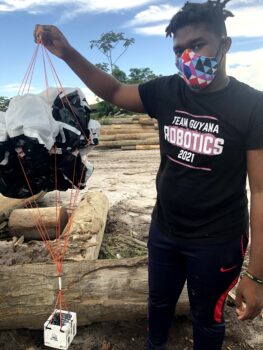 Because the technology was so new to Guyana, there was concern by Guyanese officials about little understood risks of launching. The team therefore decided to launch way off the Linden highway to alleviate the concerns of local officials.
Because the technology was so new to Guyana, there was concern by Guyanese officials about little understood risks of launching. The team therefore decided to launch way off the Linden highway to alleviate the concerns of local officials.
Another challenge was the high cost of helium. After an expected sponsorship fell through, the team purchased tanks of helium from local vendors, one of which, unknown to the team, was already used. This affected the success of the mission as there was not enough helium available at the launch site to lift the fully loaded balloon, the team was then forced to reduce weight by getting rid of key equipment, including the gps module.
The entire design, build, code process was complicated and challenging but Guyana’s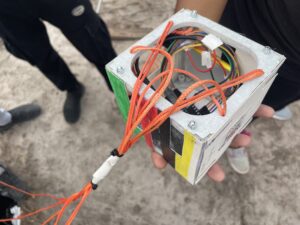 young people responded to the challenge by working days and nights to ensure their design was effective. Aboard the nonosatellite were an arduino board with multiple sensors, a gps unit, a high definition camera and a homemade parachute to ensure safe landing. The cubesate was designed to reach the height of 25 kilometers, where the balloon would burst and return to within a two mile radius of the launch site.
young people responded to the challenge by working days and nights to ensure their design was effective. Aboard the nonosatellite were an arduino board with multiple sensors, a gps unit, a high definition camera and a homemade parachute to ensure safe landing. The cubesate was designed to reach the height of 25 kilometers, where the balloon would burst and return to within a two mile radius of the launch site.
Results
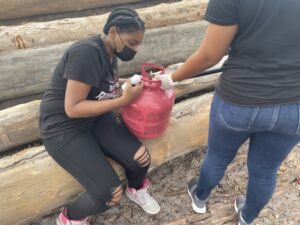 Team Guyana was able to successfully design, build, code and launch their nanosatellite. They encountered a limitation in measuring results as they have yet been unable to retrieve device. The team believes that the device has been retrieved and they plan to reach out to locals to request that the device be returned as it is important that they are able to review and report on the results.
Team Guyana was able to successfully design, build, code and launch their nanosatellite. They encountered a limitation in measuring results as they have yet been unable to retrieve device. The team believes that the device has been retrieved and they plan to reach out to locals to request that the device be returned as it is important that they are able to review and report on the results.
All Guyanese should be proud of this signature achievement by these young local innovators. Now that the team has a thorough understanding of the engineering design for nano-satellites, they plan to soon repeat and complete the experiment.
Launch Video
